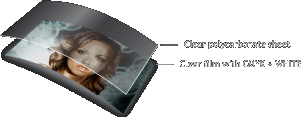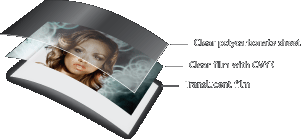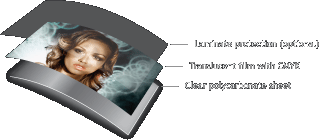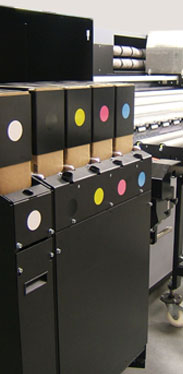There are various options for getting print onto the polycarbonate sheet, here you will find a description of some of the most common options.
The method we apply - is a direct CMYK + WHITE print - listed below, this technique gives the maximum freedom to play with colors and light.
Mirror print + white on backside, uv hardened
Flatbed printer with white and UV hardening

Mirror print on backside with translucent film
Flatbed printer (optional UV hardening)

Mirror print + white mounted on backside
Roll-feed printer + UV-curable ink

Print and translucent film mounted on backside
Roll-feed printer + UV-curable ink

Print mounted on frontside
Roll-feed printer + UV-curable ink



The printing of our polycarbonate sheets for Lumaline products takes place on a Durst Rho flatbed printer in CMYK, plus white as an extra colour.
Print the graphics first – laterally reversed – so the print is protected behind the sheet when it is in use.
Print the white colour on top of the CMYK colour so the graphics are enclosed
by the clear polycarbonate and the white colour.
This results in a fantastic effect when a light source shines from behind the polycarbonate sheet, an effect that is one of the milestones in the development of the Lumaline range.
For printing on polycarbonate, the following method must be used:
European market: All materials (images and graphics) are to be submitted in CMYK with Fogra’s ISO-coated 27L colour profile (ISO Coated.icc).
American market: All materials (images and graphics) are to be submitted in CMYK with U.S. Sheetfed Coated v2 colour profile (USSheetfedCoated.icc).
Simulation profile: It is possible to simulate the final product on calibrated/profiled equipment using profiles from Tech View.
These profiles and instructions of use, can be downloaded here.